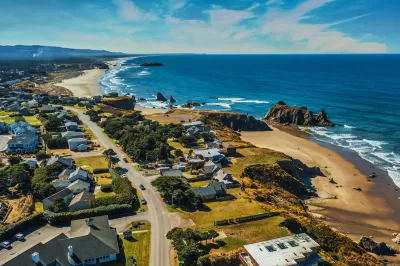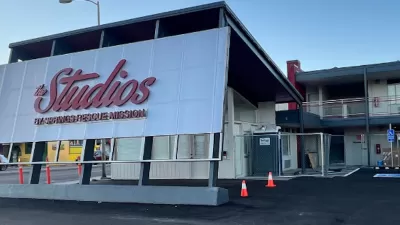Northwest Oregon towns face a growing housing crisis, but affordable housing grants are hard to come by for underresourced communities.

Small northwest Oregon towns are struggling to house their residents as housing costs grow and funds for affordable housing projects in rural areas remain scarce, reports Claire Carlson in the Daily Yonder.
Elissa Gertler, housing manager for Clatsop County, told the Daily Yonder that her region is dealing with “urban-scale problems” with only “rural-level resources.” In that county, where the population nearly doubles in the summer, long-term rentals are hard to come by and the median home price is $539,000. Meanwhile, regulations governing coastal development make it difficult to build new housing.
Rural officials say they often struggle to apply for and access state and federal affordable housing grants. “In small counties with limited resources to devote to this process, it can be extremely difficult to compete with metro areas for the same money,” Carlson writes.
In Clatsop County, a former motel is being converted to 55 housing units for healthcare workers and low-income residents, which will bring both affordable housing and preserve access to healthcare services in the region.
FULL STORY: Coastal Oregon County Tackles ‘Urban Scale’ Housing Issues

Trump Administration Could Effectively End Housing Voucher Program
Federal officials are eyeing major cuts to the Section 8 program that helps millions of low-income households pay rent.

Planetizen Federal Action Tracker
A weekly monitor of how Trump’s orders and actions are impacting planners and planning in America.

Ken Jennings Launches Transit Web Series
The Jeopardy champ wants you to ride public transit.

California Invests Additional $5M in Electric School Buses
The state wants to electrify all of its school bus fleets by 2035.

Austin Launches $2M Homelessness Prevention Fund
A new grant program from the city’s Homeless Strategy Office will fund rental assistance and supportive services.

Alabama School Forestry Initiative Brings Trees to Schoolyards
Trees can improve physical and mental health for students and commnity members.
Urban Design for Planners 1: Software Tools
This six-course series explores essential urban design concepts using open source software and equips planners with the tools they need to participate fully in the urban design process.
Planning for Universal Design
Learn the tools for implementing Universal Design in planning regulations.
Ada County Highway District
Clanton & Associates, Inc.
Jessamine County Fiscal Court
Institute for Housing and Urban Development Studies (IHS)
City of Grandview
Harvard GSD Executive Education
Toledo-Lucas County Plan Commissions
Salt Lake City
NYU Wagner Graduate School of Public Service





























